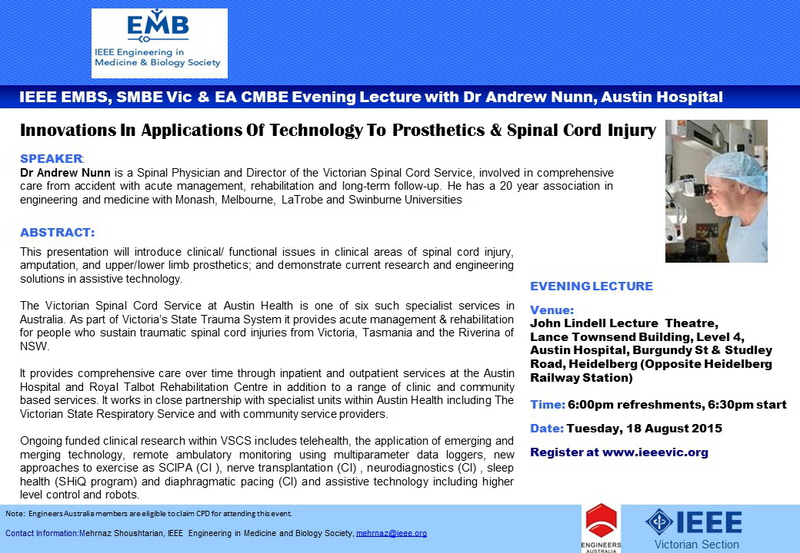|
Current Innovations in Cardiovascular Technology:
Emerging Cardiac Technology,
clinical need and engineering evolution
Professor James D. Cameron
Associate Director MonashHEART, Monash Medical Centre
Member, Senior Medical Staff, Monash Health & Epworth Hospital
Director, Monash Cardiovascular Research Centre
(Adjunct) Professor of Medicine, Monash University
Tuesday 17th February 2015
Starts 6:00 PM(Refreshments available from 5:30 PM)
Engineering House
21 Bedford St, North Melbourne
All welcome
Abstract
The presentation will provide an overview of engineering responses to the improvement of clinical effectiveness in the evolution of new cardiac technologies, in particular in cardiac CT imaging, renal denervation for resistant hypertension and in the rapidly progressing development of devices for the transluminal repair/replacement of heart valves.
Biography
Professor James D. Cameron MBBS MD BE(Elec) MEngSc FIEAust. CPE(Biomed), FCSANZ
• Director, Monash Cardiovascular Research Centre, Associate Director MonashHEART. Monash Medical Centre.
• (Adjunct) Professor of Medicine - Monash University, Melbourne, Australia.
• Member, Senior Medical Staff - Monash Health and Epworth Hospital, Melbourne, Australia
Jim Cameron is Director of the Monash Cardiovascular Research Centre and Associate Director of MonashHEART at Monash Medical Centre. He is internationally known for work on large, conduit artery function and mechanics with particular interests in hypertension, assessment of arterial function in vascular health and in biological ageing; and more recently his group has been at the forefront of novel approaches to the assessment of cardiac function using cardiac CT. He was co-recipient of the 2004 RJ Hall prize of the Cardiac Society of Australia and New Zealand and was admitted to Fellowship of the Society in 2006. From 2008
to 2013 he was Professor of Engineering (Biomedical) at La Trobe University. He is
immediate Past-President of the International Society of Vascular Health.
Note to Engineers Australia Members
EA Biomedical College Members are urged to RSVP via their intended attendance via the EA website
http://www.engineersaustralia.org.au/events/current-innovations-cardiovascular-technology-emerging-cardiac-technology-clinical-need-and
|
